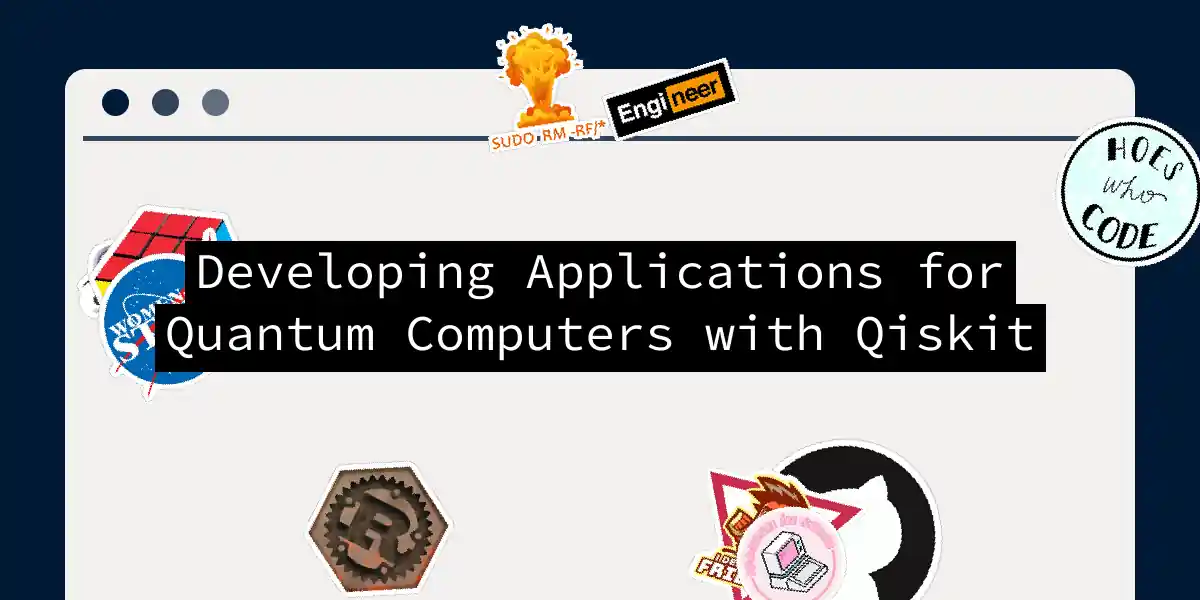Introduction to Quantum Computing and Qiskit
In the realm of software development, the advent of quantum computing is like the arrival of a new superhero – it promises to save the day by solving problems that classical computers can only dream of tackling. At the forefront of this quantum revolution is Qiskit, an open-source software development kit (SDK) developed by IBM. In this article, we’ll delve into the world of quantum computing and explore how to develop applications using Qiskit.
What is Qiskit?
Qiskit is more than just a tool; it’s a comprehensive ecosystem for quantum programming. It allows developers to build, run, and optimize quantum computational workflows from the ground up. With Qiskit, you can design quantum circuits, execute them on simulators or real quantum hardware, and analyze the results – all within a Python-based environment that’s both powerful and user-friendly[4].
Setting Up Qiskit
Before you can start coding, you need to set up Qiskit on your machine. Here’s a step-by-step guide to get you started:
Installation
To install Qiskit, you can use pip, the Python package manager. Here’s the command you need to run:
pip install qiskit
Basic Components of Qiskit
Qiskit is composed of several key components:
Qiskit Terra: This is the core module of Qiskit, providing tools for working with quantum circuits and backends. It includes functionality for creating and manipulating quantum circuits, as well as running them on various backends[4].
Qiskit Aer: This is a high-performance simulator for quantum circuits. It allows you to simulate quantum circuits on your local machine, which is incredibly useful for testing and debugging your code[4].
Qiskit Ignis: This module provides tools for noise characterization and mitigation, which are crucial for working with real quantum hardware where noise is a significant issue[4].
Creating a Quantum Circuit
Let’s dive into the fun part – creating a quantum circuit. Here’s an example of how you can create a simple Bell state using Qiskit:
Step 1: Map the Problem to Quantum-Native Format
In quantum programming, quantum circuits are the native format for representing quantum instructions. Here’s how you can create a circuit that produces a Bell state:
from qiskit import QuantumCircuit
# Create a new circuit with two qubits
qc = QuantumCircuit(2)
# Add a Hadamard gate to qubit 0
qc.h(0)
# Perform a controlled-X gate on qubit 1, controlled by qubit 0
qc.cx(0, 1)
# Draw the circuit
qc.draw("mpl")
This code creates a quantum circuit with two qubits, applies a Hadamard gate to the first qubit to put it into a superposition, and then applies a controlled-X gate to entangle the two qubits[3].
Step 2: Optimize the Circuit
Optimization is crucial when working with larger circuits. However, for this simple example, we don’t need to optimize anything because we’re running it on a simulator that can handle all the gates directly.
Step 3: Execute the Circuit
To execute the circuit, you need to choose a backend. Here’s how you can run it on a local simulator:
from qiskit.providers.aer import AerSimulator
# Create a simulator backend
simulator = AerSimulator()
# Run the circuit on the simulator
job = simulator.run(qc)
result = job.result()
# Print the result
print(result.get_counts())
This code runs the circuit on a local simulator and prints the measurement outcomes[3].
Step 4: Analyze the Results
After executing the circuit, you need to analyze the results. For our Bell state example, the output should show an equal probability of measuring 00 and 11, indicating that the qubits are entangled.
# Analyze the results
counts = result.get_counts(qc)
print(counts)
This will output something like {'00': 512, '11': 512} if you run it enough times, showing the entanglement of the qubits[3].
Scaling to Utility-Scale Circuits
As quantum computing moves into the utility era, we need to scale our circuits to handle hundreds or even thousands of qubits. Here’s a high-level overview of how you can scale your approach:
Using Qiskit Primitives
Qiskit 1.0 introduces primitives, which are a new way to access quantum hardware. Primitives ensure consistent and reliable access to quantum hardware, making it easier to scale your workflows.
from qiskit_ibm_runtime import EstimatorV2 as Estimator
# Set up observables
observables_labels = ["IZ", "IX", "ZI", "XI", "ZZ", "XX"]
observables = [SparsePauliOp(label) for label in observables_labels]
# Create an estimator
estimator = Estimator(backend="ibmq_armonk")
# Run the estimator
result = estimator.run(qc, observables)
This code sets up observables and uses the Estimator primitive to run the circuit on real quantum hardware[3].
Workflow with Qiskit Patterns
Qiskit follows a four-step pattern for most quantum computation workflows:
Here’s a brief overview of each step:
- Map the problem to circuits and operators: Translate your problem into quantum circuits and operators.
- Optimize the circuit: Optimize the circuit for the specific backend you are using.
- Execute using a quantum primitive function: Run the circuit using a quantum primitive function.
- Analyze the results: Analyze the output to extract meaningful information[3].
Best Practices and Advanced Features
Modular Approach
When working with complex quantum circuits, it’s essential to use a modular approach. Break down your circuit into smaller components to make it easier to debug and maintain.
Pulse-Level Control
Qiskit offers pulse-level control, allowing you to manipulate quantum circuits at the level of individual pulses. This feature is particularly useful for implementing advanced quantum algorithms and calibration techniques[4].
Error Mitigation
Qiskit provides tools for mitigating errors in quantum computations, including methods for measuring and correcting coherent errors and reducing stochastic errors. This is crucial for achieving reliable results on real quantum hardware[4].
Conclusion
Developing applications for quantum computers with Qiskit is an exciting journey that combines the power of quantum mechanics with the flexibility of Python programming. By following the steps outlined here, you can create, optimize, and execute quantum circuits, even scaling them to utility-level complexity.
Remember, quantum computing is not just about solving complex problems; it’s also about exploring new frontiers in technology. So, buckle up and join the quantum revolution with Qiskit as your trusty sidekick.
